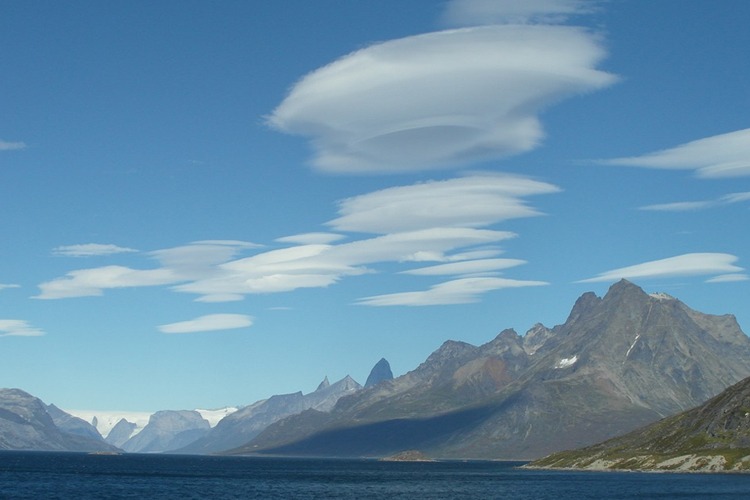Clouds are not all white, puffy, and fluffy, just like most of us people think. Some clouds are very thin, some clouds appear darker than usual, and some resemble different things like pouches and stuff. This article will discuss one of the special cloud types, which are called Orographic Clouds.
WHAT IS AN OROGRAPHIC CLOUD
An orographic cloud is a special type of cloud formed when the air is forcefully lifted around by the topography of the Earth, like the mountains and the hills. When the air on the hills or mountains that usually sways back and forth passes over it, the air would be lifted up and then starts to cool as it reaches a high altitude. When the air is lifted and is already cooled, water vapor residing in it condenses, and it would eventually turn into a cloud. This cloud is what we call the orographic cloud. Orographic clouds are produced because of a process called orographic lifting.
OROGRAPHIC LIFTING AND ITS EFFECTS
Orographic lifting, like any other phenomena, affects the Earth’s atmosphere. Listed below are the effects of orographic lifting.
Precipitation
Orographic precipitation is one of the usual effects of orographic lifting. This happens when the moist air in the mountains rises up and then cools as it is lifted in the atmosphere. When it cools, the orographic clouds are formed, and these clouds cause the precipitation. Precipitation usually falls on the upwind of the hills and mountains. Precipitation caused by orographic lifting is likely to occur in places around the world. Examples are the Mogollon Rim that can be found in central Arizona, the western side of the Sierra Nevada mountain range located in California, and the west part of the Appalachian Mountains, a mountain range in West Virginia.
Leeward Winds
Leeward winds are another orographic lifting effect that occurs on the other side of the mountains.On this side, the downwind direction occurs. As the air comes down the mountain, it becomes warmer, drier, and the moisture starts to fade away. Since the area is low in humidity, precipitation is not likely to occur.
Rain Shadowing
If an orographic lifting causes precipitation, it most likely would also cause rain shadowing. Rain shadow is a dry part on the other side of the mountain called the leeward side, where the downwind direction occurs. As the precipitation falls to the windward side, mountains block the passage to the other side, making the leeward side very dry. As the air comes down the other side of the mountain, the air, with not enough moisture, warms and dries, casting a shadow to the lee side of the mountain. Some of the areas that experience rain shadowing are the Atacama Desert located between Peru and Chile, the Pacific Cordillera found in Canada, the flat Central Valley in California.
Associated Clouds
As air experiences orographic lifting, different cloud formations can be formed. Some of these cloud effects are a banner cloud, an orographic fog, a rotor cloud, a lenticular cloud, a chinook arch cloud, and a cap cloud.
- Banner Cloud– a banner cloud is usually seen on the downwind side of isolated, pyramid-shaped mountains with steep sides like the Matterhorn and Mount Everest. Low-pressure areas are observed on the leeward side of the mountains. These areas with low-pressure suck in moist air, and when there is enough humid air, it ascends, and condensation occurs, forming a banner cloud.
- Orographic fog– this is usually formed when moist and humid air ascends in the slope. Most of the moist air fall in the upwind direction and some typically cover the mountain’s peak.
- Rotor cloud– rotor clouds are usually formed in the lower areas of the leeward side. This cloud type looks like a tattered cumulus cloud and has extreme wind turbulence that produces very rough air.
- Chinook Arch Cloud– this is an example of a mountainous wave cloud that usually occurs in North America. It is generally seen at the top of the mountain ranges when chinook winds caused by orographic lifting on the mountain range occur. It produces a dome-like arch just above the mountain range.
- Lenticular Cloud– lenticular clouds are another type of orographic clouds that follow the shape of a lens. These clouds usually form in the lower areas of the leeward side. When the humid air at the top of a mountain or a hill rises, the air that moves in a wave-like pattern starts to condense, forming the lenticular cloud.



